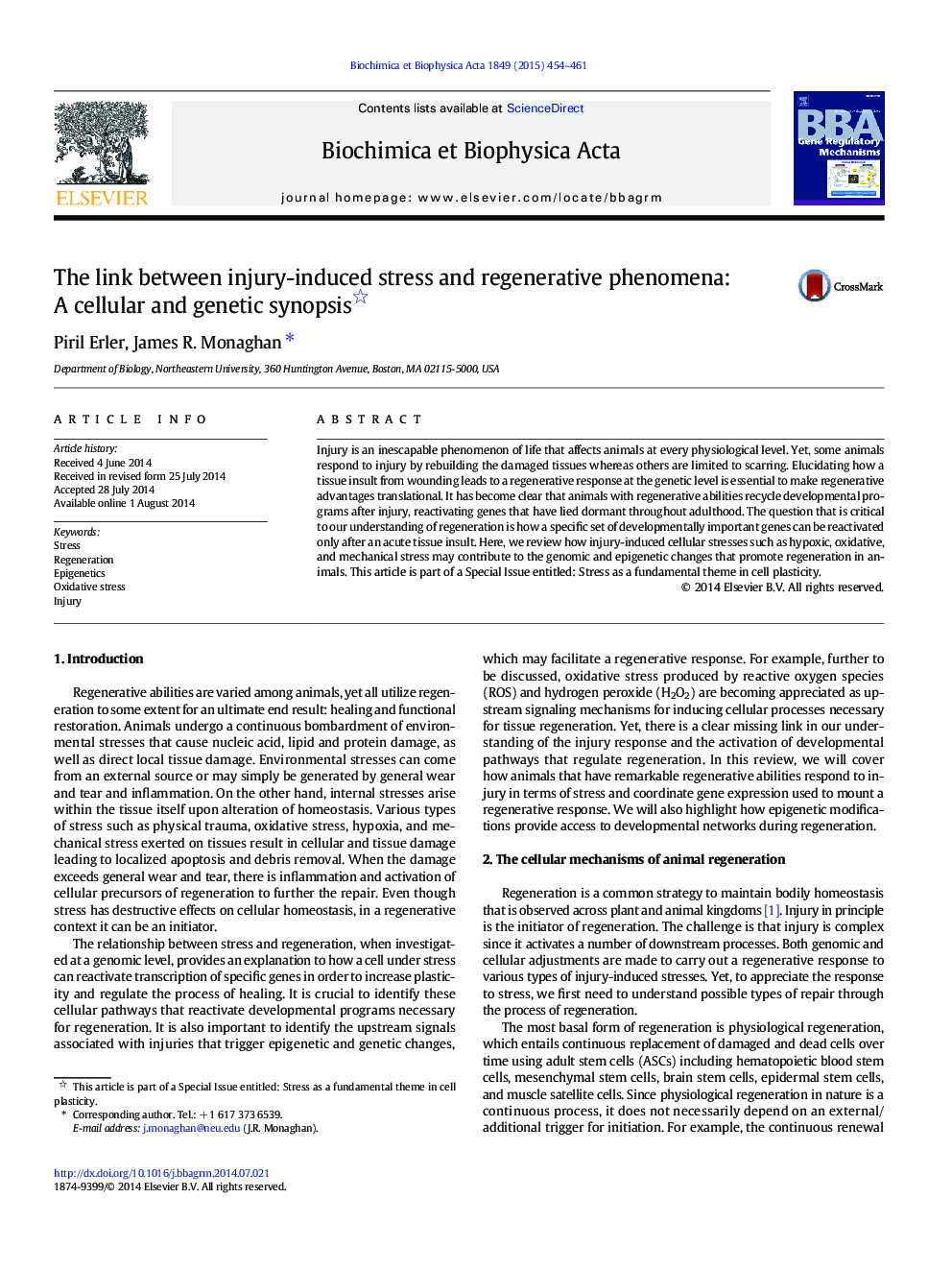| Article ID | Journal | Published Year | Pages | File Type |
|---|---|---|---|---|
| 1946422 | Biochimica et Biophysica Acta (BBA) - Gene Regulatory Mechanisms | 2015 | 8 Pages |
•Regeneration is initiated by local injury-induced signaling.•Reactive oxygen species are damage signals that initiate regenerative processes.•Epigenetic changes during regeneration allow reactivation of developmental programs.•Transposable elements become activated during some modes of regeneration.
Injury is an inescapable phenomenon of life that affects animals at every physiological level. Yet, some animals respond to injury by rebuilding the damaged tissues whereas others are limited to scarring. Elucidating how a tissue insult from wounding leads to a regenerative response at the genetic level is essential to make regenerative advantages translational. It has become clear that animals with regenerative abilities recycle developmental programs after injury, reactivating genes that have lied dormant throughout adulthood. The question that is critical to our understanding of regeneration is how a specific set of developmentally important genes can be reactivated only after an acute tissue insult. Here, we review how injury-induced cellular stresses such as hypoxic, oxidative, and mechanical stress may contribute to the genomic and epigenetic changes that promote regeneration in animals. This article is part of a Special Issue entitled: Stress as a fundamental theme in cell plasticity.
